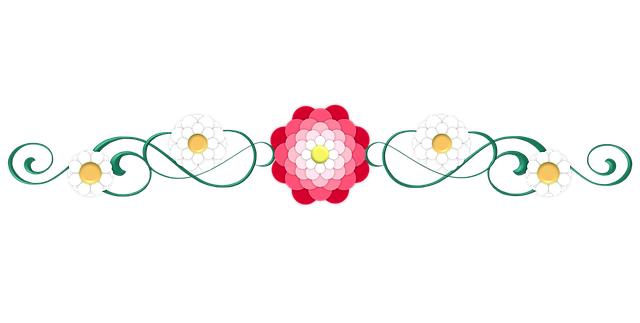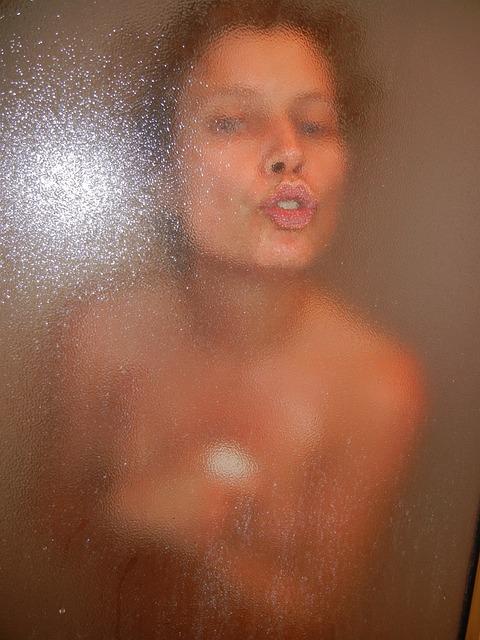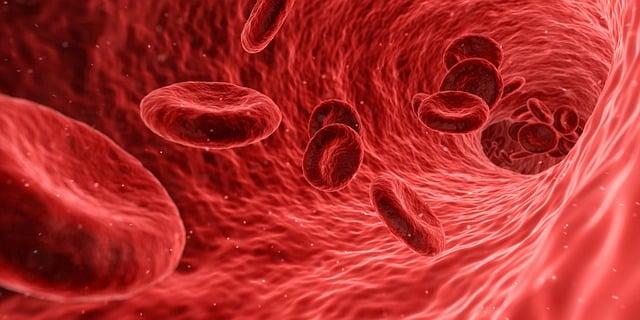Can I Take a Hot Shower After an Ice Bath? Balancing the Elements

Are you planning to indulge in the rejuvenating benefits of an ice bath but wondering if it’s safe to follow it up with a hot shower? Well, worry no more! In this informative article, we’ll delve into the realm of balancing the elements and discuss whether taking a piping hot shower after an icy plunge is a wise move or not. So, brace yourself as we unravel the secrets behind this age-old question. By the end, you’ll have a clear understanding of whether you can indulge in both extremes for a perfect equilibrium. Let’s dive in!
Contents
- Understanding the Impact of Temperature Shifts on the Body
- Recovering from an Ice Bath: The Key Considerations
- The Importance of Gradual Temperature Transitions in Post-Ice Bath Recovery
- Striking a Balance: The Optimal Timing for Taking a Hot Shower After an Ice Bath
- Preserving the Beneficial Effects of Cold Therapy: Tips for Post-Ice Bath Showers
- Risks and Precautions: Potential Dangers of Immediate Hot Showers After an Ice Bath
- Maximizing the Benefits: Incorporating Contrast Therapy into your Post-Ice Bath Routine
- The Role of Active Recovery: Alternating Between Warm and Cold Showers
- Understanding the Benefits of Alternating Between Warm and Cold Showers
- Tailoring Your Recovery: Finding the Perfect Temperature Balance for Your Body
- Conclusion: Achieving an Optimal Recovery Routine through Temperature Balancing
Understanding the Impact of Temperature Shifts on the Body
When it comes to subjecting our bodies to extreme temperature shifts, it’s important to understand the potential impact it can have. Ice baths and hot showers are two popular methods for alternating between cold and hot temperatures, each providing unique benefits to the body. However, finding a balance between these elements is key to maximizing their effectiveness.
While taking an ice bath helps to reduce inflammation, boost circulation, and speed up muscle recovery, following it up immediately with a hot shower can actually diminish these benefits. The sudden shift from cold to hot can cause the blood vessels to rapidly expand, potentially leading to discomfort and even injury. To avoid this, it’s recommended to allow your body to gradually adjust to the change in temperature. Give yourself a few minutes to warm up before turning the shower to hot, allowing the blood vessels to expand more slowly and reducing the risk of any negative impacts.
If you prefer the convenience of alternating between cold and hot water during your shower, try a contrast shower instead. This method involves alternating between 2-3 minutes of cold water and 2-3 minutes of hot water, repeating the cycle a few times. The contrast between the temperatures can stimulate blood flow and promote overall well-being, without subjecting your body to sudden temperature shifts.
In summary, while it may be tempting to jump into a hot shower immediately after an ice bath, it’s important to understand the impact of temperature shifts on the body. By allowing yourself time to adjust and considering alternative methods like contrast showers, you can strike a balance that maximizes the benefits of both hot and cold temperatures for your overall health and well-being.
Recovering from an Ice Bath: The Key Considerations
One of the common questions that people ask after taking an ice bath is whether they can take a hot shower immediately afterward. While it may seem like a logical next step to warm up your body after subjecting it to freezing temperatures, there are several key considerations to keep in mind.
First and foremost, it’s important to understand the purpose of an ice bath. The cold temperature helps reduce inflammation, aids in muscle recovery, and increases circulation. By exposing your body to the cold, you’re triggering a response that promotes healing and rejuvenation. Taking a hot shower immediately after an ice bath can potentially diminish these benefits.
Additionally, rapid temperature changes can put stress on your body. Going from extremely cold to hot can cause blood vessels to constrict and dilate abruptly, which may lead to lightheadedness or even fainting. It’s essential to give your body time to adjust gradually to avoid any adverse effects.
Instead of jumping into a hot shower right away, here are some key considerations to help you recover effectively and maintain the benefits of your ice bath:
-
Begin with a Warm Shower: Start by gradually warming up your body with a lukewarm shower. This helps your body adapt to the temperature change without shocking your system.
-
Engage in Light Exercise: After your shower, engage in gentle movements or stretches to increase blood flow and promote muscle relaxation. Consider incorporating foam rolling or yoga into your routine to aid in your recovery process.
- Hydrate and Nourish: Replenish your body with fluids and a balanced meal or snack post-ice bath. Hydration and proper nutrition play a vital role in muscle recovery and overall well-being.
Remember, the key is to strike a balance between hot and cold temperatures to maximize the benefits of your recovery. By following these considerations, you can ensure that your body recovers effectively after an ice bath, promoting muscle repair and overall rejuvenation.
The Importance of Gradual Temperature Transitions in Post-Ice Bath Recovery
When it comes to post-ice bath recovery, gradual temperature transitions play a significant role in maximizing the benefits of this therapy. While taking a hot shower might seem like a tempting idea to warm up your body after the chilling experience of an ice bath, it’s important to strike the right balance between hot and cold elements.
One of the primary reasons for incorporating gradual temperature transitions is to allow your body to adjust and recover in a controlled manner. Rapidly transitioning from extreme cold to hot can shock your system and potentially negate the positive effects of the ice bath. By gradually increasing the water temperature, you give your body time to acclimate and prevent any sudden temperature shocks.
Additionally, gradual temperature transitions help promote circulation and reduce muscle soreness. Starting with lukewarm water and gradually increasing the temperature can help improve blood flow and aid in the removal of lactic acid build-up, allowing your muscles to recover more effectively. It also promotes a soothing sensation, relaxing your muscles and reducing any residual soreness from the ice bath.
To further enhance your post-ice bath recovery experience, consider incorporating contrast showers. Alternating between hot and cold water in short intervals stimulates your circulatory system, helps flush out toxins, and boosts overall energy levels. Start with a couple of minutes of warm water, then switch to cold water for 30 seconds, repeating this cycle several times.
Remember, the key to an effective post-ice bath recovery is to prioritize gradual temperature transitions and finding the right balance between hot and cold elements. By incorporating these techniques into your routine, you can optimize the benefits of your ice bath therapy and enhance your overall recovery process.
Striking a Balance: The Optimal Timing for Taking a Hot Shower After an Ice Bath
Taking a hot shower after an ice bath can be incredibly relaxing and rejuvenating. However, it is important to strike a balance and choose the optimal timing for this post-ice bath ritual. The combination of contrasting water temperatures can have various effects on the body, so it’s crucial to understand how to navigate this delicate balance.
Timing is key when it comes to transitioning from an ice bath to a hot shower. While it may be tempting to jump straight into the shower to warm up immediately, it’s recommended to wait for at least 10-15 minutes after your ice bath before turning up the heat. This allows your body to adapt gradually and prevent any sudden temperature shocks.
During the initial phase after an ice bath, your blood vessels constrict, reducing blood flow to your extremities and minimizing heat loss. It’s essential to give your body enough time to naturally warm up and for your blood vessels to dilate again before introducing hot water. This gradual transition supports circulation and prevents discomfort or potential health risks.
Once you’ve given your body ample time to adjust, a hot shower can provide numerous benefits. It helps to further relax your muscles, relieve any lingering stiffness, and promote faster recovery by increasing circulation to the tissues. The warm water can also help to soothe any discomfort or soreness you may experience after an intense ice bath session.
To make the most out of this post-ice bath experience, consider incorporating essential oils or Epsom salts in your hot shower. Their aromatic qualities and muscle-soothing properties can take your relaxation to a whole new level. Additionally, don’t forget to hydrate yourself before and after your ice bath and shower, as the extreme temperatures can lead to fluid loss.
Remember, the goal is to strike a balance between the invigorating effects of the ice bath and the relaxing benefits of a hot shower. So, take your time, listen to your body, and find the ideal timing that works best for you. Embrace the elements and create a post-ice bath ritual that caters to your well-being and recovery needs.
Preserving the Beneficial Effects of Cold Therapy: Tips for Post-Ice Bath Showers
When it comes to recovery after an intense workout or a long day on your feet, ice baths have proven to be a game-changer. The cold therapy they provide helps reduce inflammation, relieve muscle soreness, and accelerate the healing process. But what about taking a hot shower right after? Can it undo all the good you’ve done? Let’s dive into balancing the elements and find out the best way to preserve the beneficial effects of cold therapy.
-
Gradual temperature transition: After an ice bath, it’s important to avoid sudden temperature changes. Start with a lukewarm shower to allow your body to gradually adjust. This will help prevent shocking your muscles and keep the therapeutic benefits intact.
-
Ice baths vs. hot showers: While ice baths constrict blood vessels and reduce inflammation, hot showers stimulate blood flow and relax muscles. To strike the right balance, alternate between cold and hot water during your shower. Spend two minutes under cold water, followed by one minute under hot water, repeating the cycle three times. This contrast therapy helps increase circulation while still reaping the benefits of the cold therapy.
- Moisturize and hydrate: Cold therapy can leave your skin feeling dry, so it’s essential to moisturize after your shower. Choose a lotion or body oil that contains natural moisturizing ingredients like shea butter or coconut oil. Additionally, don’t forget to drink plenty of water to hydrate your body from within and aid in the recovery process.
In summary, taking a hot shower after an ice bath is possible, but it’s all about finding the right balance. Gradual temperature transitions, alternating between cold and hot water, and proper moisturization and hydration will help preserve the beneficial effects of cold therapy. So go ahead, indulge in a post-ice bath hot shower, and enjoy the best of both worlds – relaxation and recovery.
Risks and Precautions: Potential Dangers of Immediate Hot Showers After an Ice Bath
Taking an ice bath can be an invigorating experience, but it’s important to proceed with caution when transitioning to a hot shower immediately afterward. While the contrast of temperatures may seem enticing, there are several potential risks and precautions that you should consider before indulging in this practice.
-
Skin Sensitivity: The extreme cold of an ice bath can leave your skin sensitive and vulnerable. If you rush into a hot shower, the sudden change in temperature can cause discomfort, redness, and even irritation. It’s crucial to allow your body some time to readjust and warm up gradually before exposing it to hot water.
-
Blood Pressure: Plunging into icy water can cause vasoconstriction, which is a narrowing of blood vessels. When you step into a hot shower immediately after an ice bath, the rapid dilation of blood vessels can potentially lead to a sudden drop in blood pressure. This can be particularly risky for individuals with pre-existing cardiovascular conditions, so it’s essential to consult with your healthcare provider before attempting this combination.
- Muscle Recovery: While the contrast therapy of hot and cold can be beneficial for muscle recovery, too much heat can hinder the repair process due to its potential inflammatory effect. Instead of subjecting your body to extreme heat, it’s recommended to opt for a lukewarm shower or gently increase the water temperature gradually.
To minimize any potential risks, it’s advisable to follow these precautions:
- Allow your body to cool down naturally for a few minutes after the ice bath before stepping into a shower.
- Start with a lukewarm shower and slowly increase the temperature if desired.
- Listen to your body and be aware of any signs of discomfort or overheating.
By balancing the elements and being mindful of the potential dangers, you can enjoy the benefits of both cold therapy and the relaxing warmth of a shower, without compromising your well-being. Stay informed, stay safe, and find the perfect balance for your body and mind.
Maximizing the Benefits: Incorporating Contrast Therapy into your Post-Ice Bath Routine
Contrast therapy, a technique that involves alternating between cold and hot stimuli, has gained popularity among athletes and fitness enthusiasts for its potential benefits. Incorporating contrast therapy into your post-ice bath routine can enhance your recovery and maximize the benefits of both cold and hot therapy. But what about taking a hot shower after an ice bath? Let’s explore the concept of balancing the elements to achieve optimal results.
-
Timing is key: After an ice bath, it’s important to give your body enough time to recover and return to its normal temperature. Before hopping in a hot shower, allow yourself a few minutes to gradually warm up. This will prevent any temperature shock to your body and ensure a smoother transition.
-
Gradual temperature increase: When transitioning from an ice bath to a hot shower, it’s best to gradually increase the water temperature. Start with lukewarm water and gradually increase the temperature as your body adjusts. This will help promote circulation and prevent any sudden changes in body temperature.
- Benefits of hot shower after ice bath: Incorporating a hot shower into your post-ice bath routine can have several benefits. The heat from the shower can help relax your muscles, ease any residual soreness, and promote blood flow. It can also help alleviate any lingering stiffness and improve your overall recovery process.
It’s important to listen to your body and adjust the duration and intensity of your hot shower based on your personal preferences and comfort level. Remember, contrast therapy is all about finding the right balance between cold and hot stimuli to optimize your recovery and achieve the desired benefits.
The Role of Active Recovery: Alternating Between Warm and Cold Showers
Understanding the Benefits of Alternating Between Warm and Cold Showers
When it comes to recovery after intense physical activity, many athletes and fitness enthusiasts turn to the contrast therapy of alternating between warm and cold showers. This practice, also known as hydrotherapy, can help to enhance the recovery process and provide numerous benefits for both the body and mind.
Switching between warm and cold water stimulates blood circulation and helps to flush out toxins from the muscles. The warm water causes blood vessels to dilate, increasing blood flow and delivering oxygen and nutrients to the muscles. On the other hand, the cold water constricts blood vessels, assisting in reducing inflammation and muscle soreness. By alternating between these two temperatures, you create a pump-like effect in the body, promoting better circulation and facilitating the removal of metabolic waste.
The advantages of incorporating warm and cold showers into your recovery routine include:
- Reduced muscle soreness and inflammation
- Enhanced muscle recovery and repair
- Improved mood and mental well-being
- Boosted immune system functioning
- Increased energy levels
So, if you’ve recently undergone an ice bath to aid in recovery, it is absolutely safe to follow it up with a warm shower. In fact, the warm water can help to ease any discomfort caused by the icy temperatures. Just ensure that you gradually transition from cold to warm to avoid shocking your system.
Tailoring Your Recovery: Finding the Perfect Temperature Balance for Your Body
In the quest for an effective recovery routine, finding the perfect temperature balance for your body is key. Many athletes swear by the benefits of contrast therapy, combining hot and cold treatments to enhance muscle recovery and reduce inflammation. But what about taking a hot shower after an ice bath? Let’s delve into the art of balancing the elements and see if it’s a match made in recovery heaven.
One of the main principles of contrast therapy is the alternating effect it has on your blood vessels. Cold temperatures cause vasoconstriction, narrowing the blood vessels and reducing cell metabolism. On the other hand, hot temperatures promote vasodilation, expanding the blood vessels and increasing blood flow to the muscles. This alternating process helps flush out toxins and metabolic waste, while also delivering fresh nutrients and oxygen to the muscles.
Taking a hot shower after an ice bath can be a beneficial addition to your recovery routine, as it amplifies the vasodilation process initiated by the cold treatment. The hot water encourages further dilation of the blood vessels, allowing for increased blood flow and nutrient delivery to the muscles. Additionally, the warmth from the shower can soothe muscle soreness and promote relaxation, aiding in overall recovery.
However, it’s essential to approach the temperature balance with caution and consideration for your body’s specific needs. Here are some key points to keep in mind:
-
Gradual transition: When transitioning from the cold ice bath to the hot shower, it’s important to do so gradually. Sudden temperature changes can shock the body and may have adverse effects on blood pressure and heart rate. Start with lukewarm water and gradually increase the temperature to a level that is comfortable for you.
-
Personal tolerance: Every individual is unique, and what feels comfortable for one person may be too hot or too cold for another. Listen to your body and adjust the water temperature to fit your personal tolerance. It’s always better to err on the side of caution and avoid extremes in temperature.
- Experiment and find a balance: Your body’s response to contrast therapy may vary, so feel free to experiment and find the balance that works best for you. Some individuals may prefer a shorter hot shower after an ice bath, while others may benefit from a longer exposure to hot water. Pay attention to how your body feels and make adjustments accordingly.
In conclusion, taking a hot shower after an ice bath can be a harmonious addition to your recovery routine. The combination of hot and cold temperature treatments helps optimize blood flow, reduce inflammation, and enhance overall muscle recovery. However, remember to approach the temperature balance with care, gradually transition between temperatures, and listen to your body’s cues. Tailoring your recovery routine to find the perfect temperature balance for your body is the key to unlocking its full potential. Happy recovering!
Conclusion: Achieving an Optimal Recovery Routine through Temperature Balancing
In conclusion, achieving an optimal recovery routine through temperature balancing is a key element in maximizing your body’s recovery process. While an ice bath may lower your body temperature and reduce inflammation, taking a hot shower immediately afterwards can actually hinder the benefits you’ve gained. It’s important to understand the science behind temperature balancing and how it affects your body’s recovery.
Taking a hot shower after an ice bath can cause your blood vessels to dilate, which can counteract the vasoconstriction that occurs during the ice bath. This can limit the benefits of reduced inflammation and delay the recovery process. Instead, it’s best to allow your body to gradually warm up naturally, giving it time to adjust and reap the full rewards of the ice bath.
So, what can you do to balance the elements and enhance your recovery routine? Here are a few key tips to keep in mind:
-
Allow time for your body to naturally warm up after an ice bath. This can be done by simply waiting for your body to reach its normal temperature before taking a shower or engaging in any other post-recovery activities.
-
Consider incorporating contrast therapy into your routine. Alternating between hot and cold treatments can have a positive impact on recovery by promoting blood circulation and reducing muscle soreness. For example, you can follow your ice bath with a warm shower, then finish with a quick cold rinse.
- Incorporate other recovery techniques alongside temperature balancing. This may include foam rolling, stretching, or using recovery tools such as massage guns or compression sleeves. Combining these techniques with temperature balancing can maximize the overall effectiveness of your recovery routine.
In summary, achieving an optimal recovery routine through temperature balancing requires careful consideration of the post-ice bath activities. While it may be tempting to jump into a hot shower, it’s best to give your body time to naturally warm up and reap the full benefits of the ice bath. Be mindful of incorporating contrast therapy and other recovery techniques to enhance your overall recovery routine. In conclusion, when it comes to the invigorating practice of ice baths, it’s crucial to strike the perfect balance between hot and cold elements. While the icy plunge undoubtedly stimulates your body, mind, and overall well-being, it’s essential to approach the post-ice bath phase with wisdom. Remember, taking a hot shower immediately after might seem tempting, but it can offset some of the remarkable benefits you just gained. Instead, allow your body to gradually adjust to a warmer environment to maximize the impact of your ice bath. By respecting the delicate equilibrium between hot and cold, you’ll unlock a world of exceptional healing and rejuvenation. So, go ahead and seize the power of these contrasting elements for a truly transformative experience!















